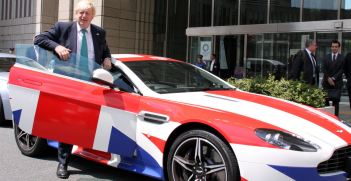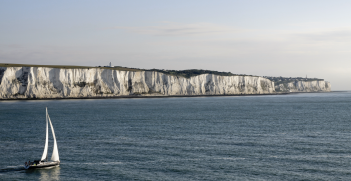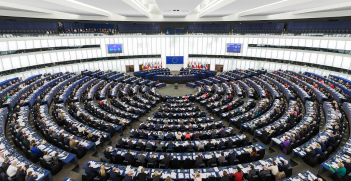The 2019 UK General Elections: A Post-Election Roundup

After ransacking Labour, Johnson pledges to reshape the Tories into a “People’s Party” and build strong new relationships with Europe.
The polls were correct. Boris Johnson won an unassailable majority in the British general election. His Conservative Party captured scores of seats in Labour heartlands, crushing opposition policies and leader Jeremy Corbyn, who will resign in the new year. It is his party’s worst result since the 1930s.
Within five minutes of the close of the ballots, the British Broadcasting Corporation (BBC) aired an exit poll predicting a Tory win with an 83-seat majority, uncannily close to the result of 80.
Thereafter, the main drama was the loss of parliamentary seat for Liberal Democrat leader Jo Swinson, as the Scottish Nationalists swept the field north of the border. Swinson resigned as leader the following morning.
We can draw some immediate conclusions. The paralysis that has dogged the UK Parliament since the June 2016 Brexit referendum is at an end. However, significant uncertainties remain to blot the landscape.
The face of British politics has changed drastically. The Conservative party now has more than 100 MPs who represent constituencies that were never “true blue.” Many are deprived areas which have suffered from the closure or scaling down of industries because of the threat of Brexit. The Conservatives have in recent years been driven by a right-wing faction and must now reshape itself into an inclusive party reflecting all 365 seats. Johnson hails this as “a change for the better,” but it is a huge challenge. The new Cabinet, to be announced in coming days, must simultaneously deliver on extravagant and costly promises made during the election while also negotiating a new trade deal with the European Union.
The opposition has crumbled. With just 202 seats, the Labour Party is in deep trouble. It has been abandoned by its former faithful in the very places where its policies were supposed to appeal. A respected poll attributed the collapse primarily to the unpopularity of Jeremy Corbyn, with far-left economic policies (12 percent) and a confusing Brexit policy (17 percent) far less important. After Christmas, Labour’s national executive will hold an inquest, and select a new leader. That is easier said than done in the absence of a stand-out candidate, and a protracted factional fight seems likely.
The disciplined Conservative campaign, run by the 35-year old Australian Isaac Levido, was a lesson in professionalism. It hammered the slogan “Get Brexit Done,” ruthlessly keeping Johnson on message, and ensuring he avoided public confrontations and tough media interlocutors. On the penultimate morning of the campaign, the prime minister fled inside the refrigerator of the dairy he was visiting to dodge a TV videographer. Watching this live in Conservative Central Office, Levido’s laconic sense of humour was on display: he went to a recording of One Day More, a track from “Les Miserables.”
In a little over a fortnight, the withdrawal agreement Johnson negotiated with the European Union will become law. Britain’s four decades of membership of the EU will end on 31 January.
The other clear winners in the election are the Scottish Nationalists, who now dominate Scotland’s representation in the House of Commons where they are the third largest party. Their primary aim is Scottish independence. Johnson has already rejected leader Nicola Sturgeon’s demand for a second referendum but will keep pressing her case.
In Northern Ireland, the Democratic Unionist Party’s deputy leader lost his seat, and nationalist parties hold sway for the first time. There will be renewed pressure for a united Ireland, particularly when Ulster folk realise that – despite Johnson’s assurances – there will have be to a border in the Irish Sea, between the province and the rest of the UK. With the Stormont parliament not functioning, direct rule of Ulster from London must continue, increasing the likelihood of a return to violence as the so-called New IRA muscle up.
The Liberal Democrats failed to make the big gains they hoped, voters put off by its policy to stop Brexit. With Swinson gone, they must elect another leader from among their 11 MPs.
Nigel Farage’s Brexit party and the former Tories who stood as independents were also big losers, failing to win a single seat between them.
While the election has brought certainty and set a clear course for Brexit, much remains unclear.
When Britain leaves the EU on 31 January, it will mark only the end of the beginning of the EU saga. In February, negotiations on a new trade deal between the UK and the 27 remaining EU countries begin. Johnson hopes it can be achieved before the transition period ends at the end of 2020 but there are many doubters. During the transition, Britain still has all the obligations of EU membership, but no representation on EU bodies and none of the benefits. Johnson opposes any extension of transition beyond December 2020, but Brussels officials believe more time is needed given that London is cutting loose from both the Customs Union and the Single Market.
Johnson has established a decent relationship with president Emmanuel Macron of France and Germany’s Angela Merkel, but that does not guarantee plain sailing. The tight timeframe may necessitate a “quick and dirty deal” on traded goods, including food. Both the EU and the UK would maintain the status quo on tariffs, meaning there may be none. That would suit the Germans, French, and Italians, who sell more to the UK than they buy.
The problem comes with Britain’s biggest export earner – services. Given London’s unwillingness to continue free movement of people and Johnson’s desire to unwind most EU regulations, the EU will be unwilling to give untrammelled access to the UK financial, legal, aviation and travel sectors. The devil will be in the details.
As time passes, the UK will realise that a decent FTA with the EU is essential to minimise the self-harm imposed by Brexit. It will take priority over the dozen or more trade deals with other countries; these are likely to be parked in the too-hard basket, although discussions may continue.
We may expect President Donald Trump to repeat his readiness to conclude a “beautiful trade deal” with his “friend” Boris Johnson, although the latter has already stood his ground with Trump on issues such as Iran and climate change. He is not as susceptible to Trump’s flattery as Australia’s Scott Morrison. We can expect to see some limited deals on two-way visa arrangements and other cooperation, but a full FTA is unlikely before Trump becomes totally consumed by preparations for November’s presidential election.
Problems regarding agriculture are likely to hamper London’s discussions with Canberra, but we can expect to see a strong pitch from Johnson’s government to join the Trans-Pacific Partnership, especially in light of Japan’s backing of it.
The biggest unknown is Johnson himself. He insists he is a “one-nation” Tory, meaning he will not be beholden to the hard-right group that held Theresa May hostage. To emphasise his point, one of his first actions after re-election was to head to Sedgefield, Tony Blair’s old seat in the north of England and a Labour stronghold since 1935, to thank the new Conservative voters. The optics were good, but can Johnson really reinvent himself as a trustworthy statesman? Can he become the latter-day Disraeli he aspires to?
I can’t answer that one, but leave you with a quote from Andrew Rawnsley, the brilliant political columnist of The Observer. He recalls that Robert Caro, biographer of former US president Lyndon Johnson, wrote: “When a man is climbing, trying to persuade others to give him power, concealment is necessary. But as a man obtains more power, camouflage becomes less necessary.” If this is true, the real Boris Johnson will become apparent.
Colin Chapman FAIIA is a writer, broadcaster and public speaker, who specialises in geopolitics, international economics, and global media issues. He is a former president of AIIA NSW and was appointed a fellow of the AIIA in 2017.
This article is published under a Creative Commons Licence and may be republished with attribution.





